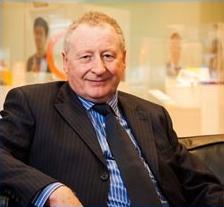 Guy Kawasaki was the keynote speaker at the recent SLA annual conference in Chicago, and here are my notes from his talk.
Guy Kawasaki was the keynote speaker at the recent SLA annual conference in Chicago, and here are my notes from his talk.
Kawasaki started by talking about his time at the Macintosh division of Apple Inc. He described them as the largest collection of egomaniacs ever assembled in the US, until the creation of the Facebook development team.
In hindsight he realised that enchantment was a key part of his life, dating back to his first job in the jewellery trade.
His two recommended essential reads are:
How to win friends and influence people, published in 1931 by Dale Carneigie, and Influence – The Psychology of Persuasions by Robert B Cialdini.
Kawasaki has observed many hi-tech speakers over the years, and with the exception of Steve Jobs, they all ‘suck and go long’.
He always uses the 10 point model for presenting. So he told us if he ‘sucks’ today we will be able to tell.
1. Achieve Likeability
– Have a great smile – not just using the jaw, but also the eyes. So crow’s feet are good. Needs to be a Duchene smile
– Accept others for what they are
– Default to ‘yes’ – How can I help the person I just met
2. Achieve Trustworthiness
– Trust others first
o Amazon – have a policy of returning an ebook in 7 days if you don’t like it
o Zappos – buy the shoes online, if you don’t like them we will pay the return postage
o Nordstrom – you can return anything to them at any time
– Become a baker not an eater – a producer not a consumer
– Find something to agree on with customers – it doesn’t have to be a big thing
o Example of a dislike of Opera
3. Perfect what you do
– Do something DICEE
o Deep
o Intelligent – they understand my pain / my problem
o Complete – the totality of the service you offer
o Empowering – they make you more creative and productive
o Elegant – someone has thought about the user interface
4. Launch
– Tell a story – a personal one, not a marketing one
– ‘My girlfriend wanted to sell Pez dispensers online’ – the story behind eBay
– Plant many seeds
– The key to bottom up marketing – make them available to everyone
– Use salient points when you talk about your services
o Calories vs Miles to burn them off
o Dollars vs Months of food for a family in Eithiopia
o Gigabytes vs X thousands of songs on portable player
5. Overcome resistance
– Provide social proof of success – the white ear-buds that came with iPods were a visual indicator in the streets
– Use a dataset to change a mindset
o Gapminder.org – review of number of children and longer lives across the world
– Enchant all of the influencers in the family not just the ones with the money, e.g. children.
6. Make your enchantment endure
– The Grateful Dead provide a space for people to tape their concerts for free
– Build an ecosystem of the totality of your service
– Invoke reciprocation
o Don’t say ‘you are welcome’ say ‘I know you would do the same for me’
o Enable people to pay you back in their own way
– Don’t rely on money (e.g. price offers) – it is not the core of enchantment
7. Great enchanters are great presenters, so:
– Customize your introduction
– Sell your dream
o iPhone = $188 of parts manufactured in a factory in China, but is more than the sum of its parts
– 10 is the optimum number of slides
– Delivered in 20 minutes at most
– A 30 point font size is optimal – so you don’t read your text out to your audience
8. Use technology
– Social media is free and ubiquitous so use it
– Remove the speed bumps for your customers
– Capta reduces the number of customers
– Sungevity.com – Uses your home address to mock up installation using satellite imagery
– Provide added value
o Information
o Insights
o Assistance
– Example of Alltop.com website – aggregates information by topics
– ‘Eat like a bird, poop like an elephant’. i.e. take little – give a lot
– Use a lot of sources and spread the information.
9. Enchant Up
– When your boss or partner asks you to do something – drop everything else and do it.
– Prototype fast
– Deliver bad news early
10. Enchant Down
– Book by Daliel H Pink – Drive
– Provide a MAP
o Mastery – if you come and work for me …
o Autonomy – if you come and work for me …
o Purpose – if you come and work for me …
– Empower action
– ‘Suck it up’ – be a boss who is willing to do the ‘dirty job’
Kawasaki summed up Enchantment as having;
The Quality of Apple – the trustworthiness of Zappos – and the likeability of Richard Branson.

























